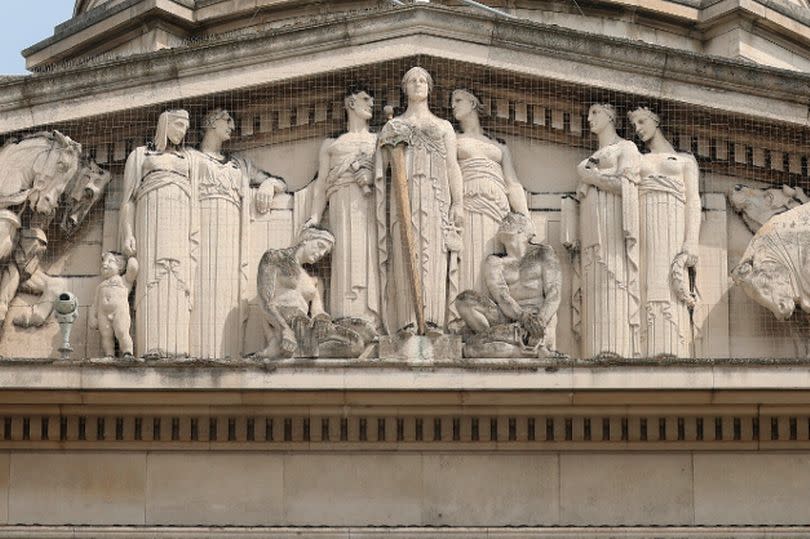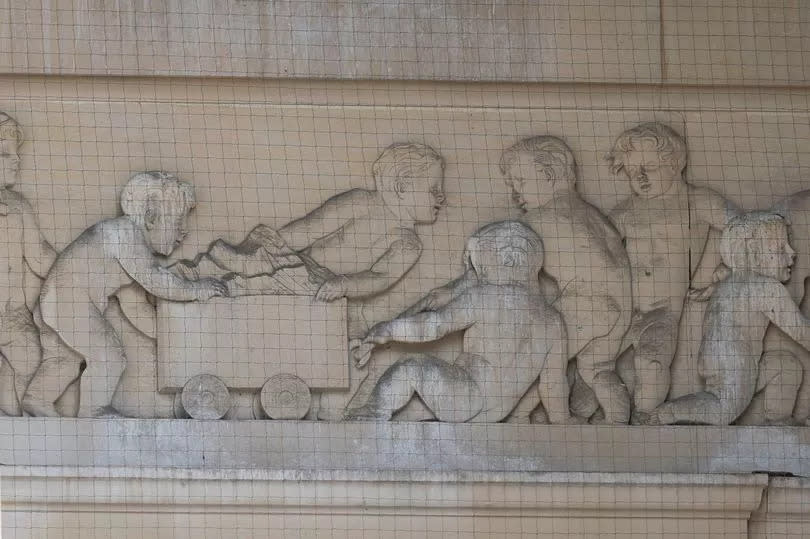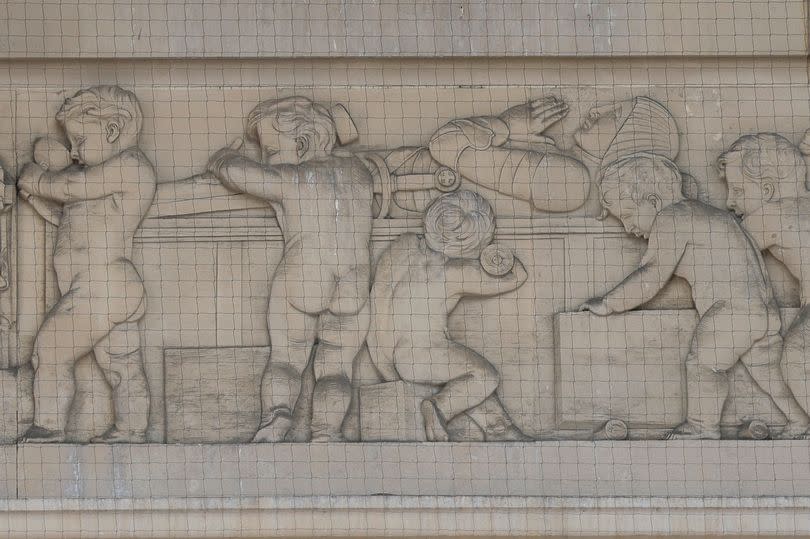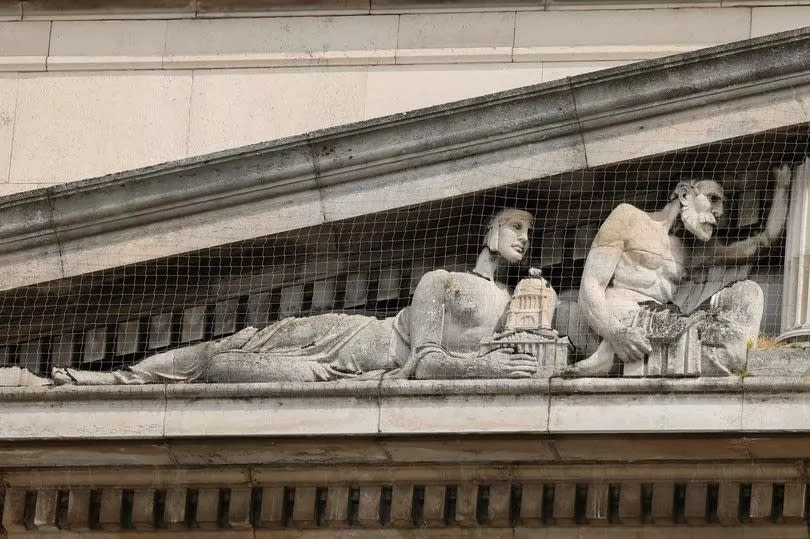Fascinating things in Nottingham city centre that thousands walk past every day and don't notice

Nottingham's most prominent building is scattered with intriguing sculptures that echo the city's history - but thousands of people walk past without looking up to notice them. Most, if not all, Nottingham residents are aware of the city's two stylized lions which sit proudly in front of Old Market Square's Council House, with the left lion being a landmark in its own right.
However, the municipal building's many other impressive stone carvings are easy to overlook, despite having interesting stories of their own. If you look up from the steps of the Council House, past the ballroom's balcony, you will see the first set of intriguing and maybe slightly disturbing stone figures.
Between the columns and windows peering into the ballroom are seven sets of cherubs - childlike sculptures that are usually depicted as angelic. But this army of unclothed figures is actually here to represent the historic trades of Nottingham, with the 25-metre decoration representing coal mining, alabaster carving, leather working and textile manufacture.
Get the latest news straight to your phone by joining us on WhatsApp

"There are angels and cherubs, with the cherubs engaged in these trades that made the city great - it's a very interesting image which they really went to town on," Ian Wells of the Nottingham Civic Society said.
"Bell foundry, mining obviously, clothworking, and alabaster carving are all up there. All of this, the lions too, are about showing the grandeur with these classical references but also linking it to the city's industries."

Other scenes in the landscape show the figures seemingly standing by the side of a dead man and carrying pottery. Looking further up to the triangle-shaped top of the front of the Council House there are even more symbolic figures cut into the stone.
In the centre of this larger set of sculptures, sitting just under the top point of the building's classical-style pediment, a woman holds a golden sword differentiating her from the 20 others. These represent the city council's duties, with the weapon-yielding figure representing justice.
Other aspects of life on the building are architecture, which is depicted with a female figure holding a miniature Council House in her hands, as well as books representing literature and education, and cattle and rams depicting agriculture. Music and the arts also make an appearance with a woman sitting amongst a lyre and a flute.

This collage of what those in the 1920s thought local authorities should represent is only overlooked by four higher statues on the Council House's dome - 200 feet above the residents, shoppers, and tourists passing through the city below. These striking artworks, perched below at each corner of the Council House's clock, symbolise 'Civic Law', 'Knowledge', 'Prosperity' and 'Commerce'.
Mr Wells explained the sculptures on the city centre's most prominent structure were directed by Joseph Else, who was the the Principal of Nottingham School of Art, along with a group of assistants that included James Woodford - who sculpted the bronze Robin Hood who stands outside Nottingham Castle.
"It has a classical style, which confers the respectability and the tradition of local government, it represents the majesty if you like. The frises represent parts of what those in the 1920s thought of the purpose of government, with the idea of local authorities at the time involving justice and the gilded sword."

 Yahoo News
Yahoo News 
